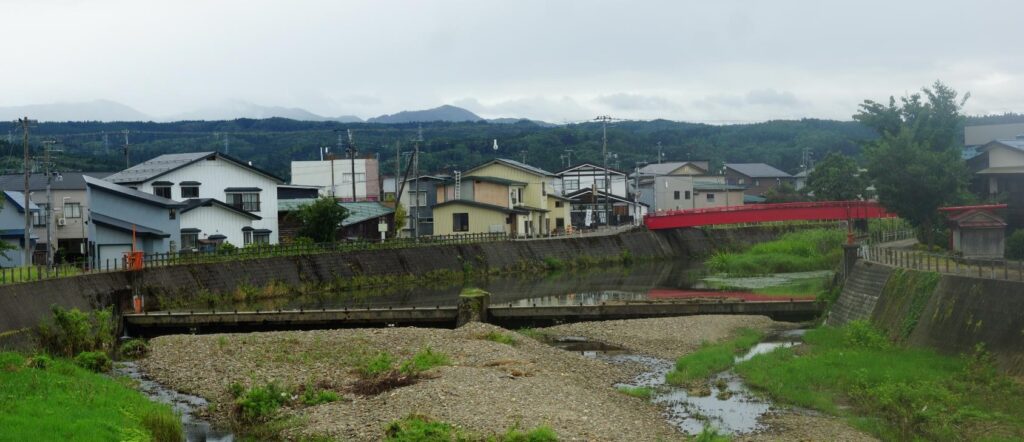
What Makes Summer in Japan’s Snow Country So Unique?
The Harsh Winters of Tohoku and the Joy of Summer
In Japan’s northern regions, winters are long, snowy, and unforgiving.
Yet, this harshness gives rise to a deep appreciation for the warmth and vitality of summer.
In towns buried under snow for half the year, summer is a season of joy, celebration, and communal expression.
Famous Summer Festivals in Northern Japan
From Aomori’s Nebuta Matsuri to Akita’s Kanto Festival and the grand fireworks of Omagari, Tohoku is rich in vibrant summer events. These festivals often reflect both the resilience and creativity of the people who endure the region’s extreme winters.
Introducing Nishimonai Bon Odori: A Timeless Dance of Ugo, Akita
What is the Nishimonai Bon Odori?
Nishimonai Bon Odori is one of Japan’s three major Bon dances, yet it remains relatively unknown outside the country. Held every August in the small town of Ugo, Akita Prefecture. This traditional dance is a hauntingly beautiful tribute to ancestors, performed in the spirit of Obon—Japan’s annual festival to honor the dead.
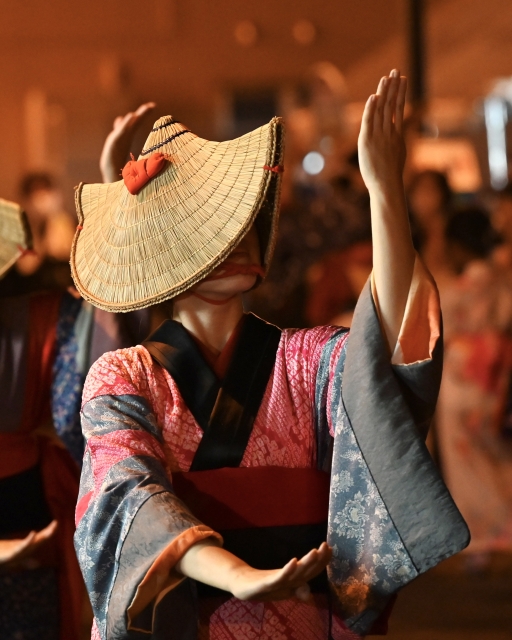
A Brief History of the Festival
The origins of Nishimonai Bon Odori trace back over 700 years. It evolved from harvest celebrations and merged with Obon traditions, surviving feudal bans and modernization to become a symbol of Ugo’s cultural identity. The dance is recognized as an Important
Intangible Folk Cultural Property of Japan.
What Makes It Unique: Costumes, Masks, and Music
Dancers wear hand-woven indigo yukata and elegant black hoods or straw hats that obscure their faces, creating an ethereal atmosphere. These yukata have been passed down through generations within each family, and each dancer’s pattern is unique. This tradition originates from times when fabric was rare and expensive; people carefully preserved and reused fabric scraps to mend their garments. Because of this, the yukata worn in Nishimonai Bon Odori are also known as “Hanui” (patch-sewn garments).
The hoods and straw hats worn by the dancers are also central to the uniqueness of Nishimonai Bon Odori. They are said to symbolize the spirits of the dead or to help create a space where all participants, regardless of social status, can join the dance as equals.
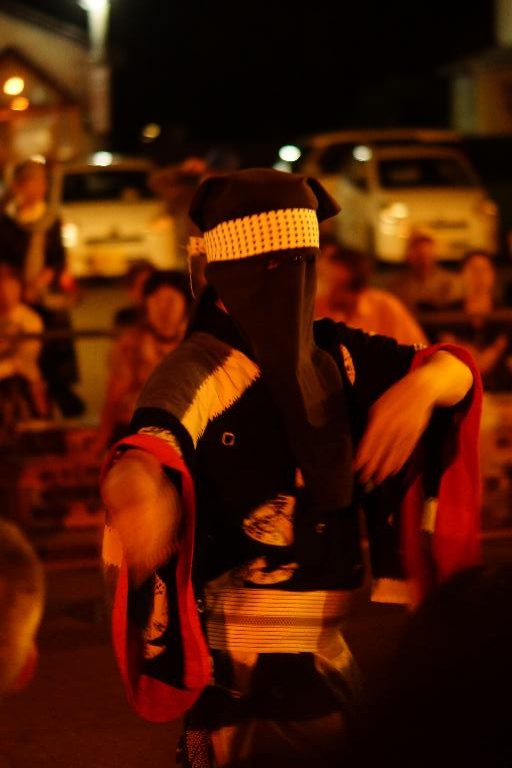
Accompanied by melancholy flute and shamisen music, their slow, rhythmic
movements evoke a sense of timelessness. The dance is both elegant and
spiritual, unlike the more energetic styles seen in other Bon Odori.
Who would like to know more about Nishimonai Bon Odori
If you’re interested in learning more about the Nishimonai Bon Odori or won’t be in Ugo during the festival period, consider visiting the Bon Odori Hall located along the town’s main street.
This facility offers detailed explanations of the dance through videos and miniature displays, and even showcases actual yukata worn by the performers. It’s an excellent way to deepen your understanding of this unique tradition.
For those who want a preview of the atmosphere, you can also watch a short video of the Nishimonai Bon Odori below. It captures the haunting beauty of the dance, the sound of traditional music, and the mysterious elegance of the masked performers.
What to Do in Ugo Town Besides the Festival
Local Food and Traditional Crafts
Don’t miss local specialties and regional sake.
Hiyakake (Cold Soba with Chilled Broth)
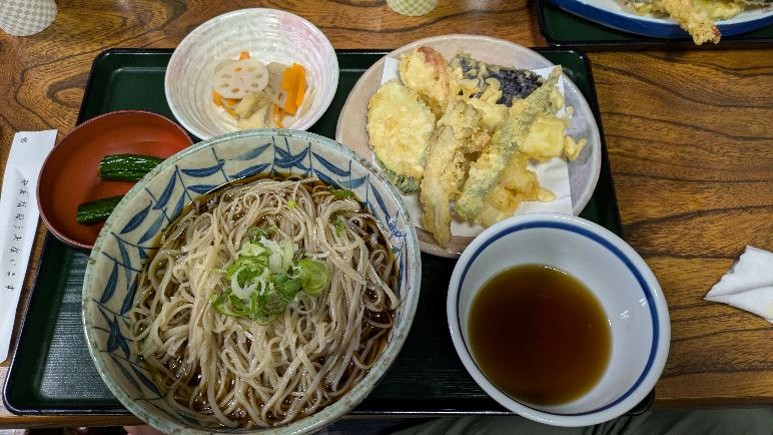
The history of soba in Ugo Town dates back to 1818, when a soba craftsman who had trained in Osaka returned and opened a shop called “Yasuke Sobaya.” Today, soba in Ugo is typically made with strong, chewy noodles using funori seaweed as a binding agent. Whether
it’s the heat of summer or the deep snows of winter, the local way to enjoy soba is in the hiyakake style—served in a chilled broth. Each family’s soba patterns are unique, and the tradition reflects a time when fabric and resources were precious.
Yasuke Sobaya still operates in the heart of Ugo Town, so if you visit, be sure to try their hiyakake soba for a taste of local tradition.
Need to Know
Open from 11:00 AM to 1:00 PM
Closed on Mondays
In neighboring Yokote City, a popular local dish is Yokote Yakisoba—fried noodles topped with a sunny-side-up egg.
Yakisoba (Fried Noodle)
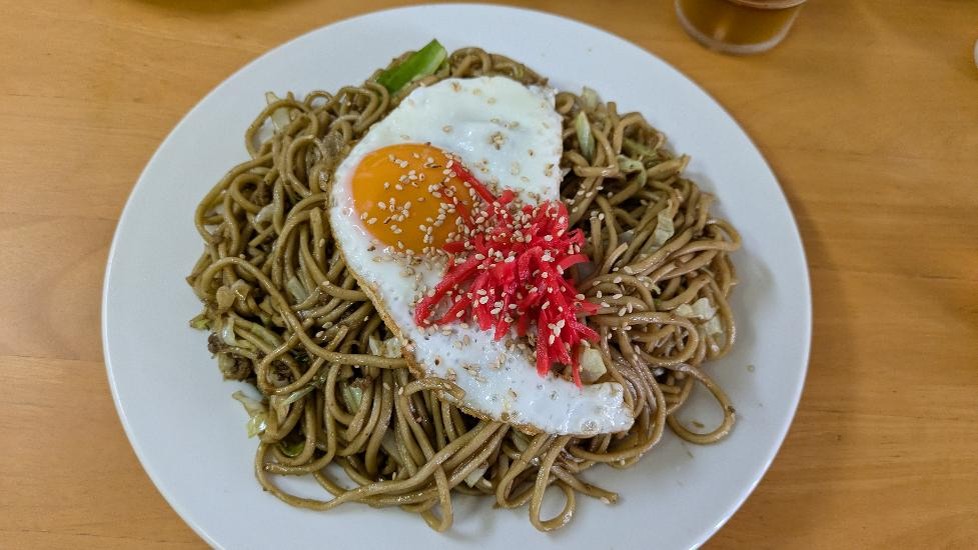
Influenced by this culinary culture, Ugo Town also has its fair share of yakisoba shops.
One of the most beloved and foreigner-friendly places is Taiyo Shokudo, a retro-style eatery with a long history. Though the entrance may be a bit hard to spot at first, look for the noren curtain, and you’ll find a cozy diner that feels like stepping back into Japan’s Showa era.
Taiyo Shokudo also offers takeout, making it easy to plan your meals: enjoy hiyakake soba at Yasuke for lunch, and then grab some yakisoba to eat while watching the Bon Odori in the evening. It’s the perfect way to experience Ugo’s local flavors in a single day.
Need to Know
Open from 10:30 AM to 4:00 PM
Closed on Thursdays
Seasonal Attractions: Snow, Green Fields, and More
In winter, Ugo transforms into a snow-covered wonderland perfect for photography and snowshoeing.
Spring and summer bring verdant fields, cherry blossoms, and golden rice landscapes that
showcase the beauty of rural Japan year-round.
Tips for First-Time Visitors to Rural Japan Festivals
Festival Etiquette and Photography Tips
Respectful behavior is key. Avoid flash photography, don’t interrupt the dancers, and follow local guidelines. Dancers do not continue dancing non-stop; they often step in and out of the circle to take short breaks. If you approach them at the right moment, they may be happy to take a photo with you.
Useful Japanese Phrases and Apps
Basic phrases like “Arigatou” (Thank you) and “Konnichiwa” (Hello) go a long way. Translation apps such as Google Translate or Papago can help bridge communication gaps.
When and Where to See the Nishimonai Bon Odori
Festival Dates and Schedule
The festival is held annually from August 16th to 18th. If you are interested in more detail information please see this page, official web site of Nishimonai Bon Odori. Each evening, the town streets become a stage where locals and visitors gather to witness the dance under lantern-lit skies.
How to Get to Ugo Town (Access from Akita City or Tokyo)
Ugo Town is accessible by train and bus from Akita City, with connections via the Akita Shinkansen from Tokyo. To get to Ugo, transfer trains at Omagari Station and head to Yuzawa, the nearest station. From there, local buses or taxis can take you to Ugo in about 20 minutes.

Where to Stay Nearby
Accommodation options in Ugo are limited, so early booking is recommended. Nearby cities like Yuzawa and Yokote offer hotels and ryokan for travelers looking for more choices.
Final Thoughts: Why Nishimonai Bon Odori Deserves a Spot on Your Japan Bucket List
Ugo’s Nishimonai Bon Odori isn’t just a dance—it’s a living tradition, a poetic tribute to the past, and a serene celebration of community. For travelers seeking authentic and unforgettable cultural experiences, this hidden gem in rural Akita offers something truly special.
